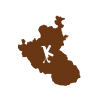Kodava’s Contribution to the Freedom Struggle
The country’s independence struggle has many tales of valour, victory and patriotism. In their plan of ruling the entire nation, the British East India Company annexed Kodagu after dethroning Chikka Veerarajendra, the erstwhile ruler, in 1834. For the next 75 years, the Company ruled Kodagu without any major resistance. They established educational institutions, introduced the science of coffee cultivation, better administration and improved the economy in general.
Contents
Revolt against British
An organisation named Jamindars Society, was started in 1909 by Rao Bahadur Codanda Madaiah and Biddanda Ganapathy to recommend the issues of the Kodavas to the British government. By 1912, the Society gained many members and made its presence felt in almost every village of Kodagu. In 1921, many prominent members felt the need to start a local newspaper that voiced the opinion of the people. With Pandiyanda Belliappa, a veteran Gandhian, as the first editor, this publication soon became very popular and made substantial progress in making people aware of their rights.
Establishment of the National Congress Party in Kodagu
The next big step came through the establishment of the National Congress Party in Kodagu. About 35 members from this organisation participated in the Congress Session presided over by Mahatma Gandhi at Belgaum in 1924. On January 4, 1925, Kodagu Zilla Congress Committee was formed with 15 founder members. On the occasion of Swaraj Day in March 1929, people from Kodagu organised a public meeting in Gonicoppal to support Gandhiji’s call for Swaraj. Many senior leaders from Karnataka Congress such as Aluru Venkata Rao, Ranganath Diwakar and Kamaladevi Chattopadhyaya started visiting Kodagu to train and motivate local leaders. Many litterateurs such as Da Ra Bendre, K V Puttappa, Masti Venkatesh Iyengar, D V Gundappa also made frequent trips to Kodagu to galvanise people in fighting for freedom.
In an effort to make people more patriotic, on the last Sunday of every month, the Indian national flag was hoisted at Ponnampet. People were encouraged to wear khadi and were made aware of the ills of alcohol consumption. Bhajans and harikathas were organised regularly. In fact, the well-known exponent of harikatha, Belur Keshavdas visited Kodagu to infuse a new wave of patriotism in the population. In 1930, under the leadership of Pandiyanda Belliappa, the government was given an ultimatum to close all the liquor shops in Kodagu. When it didn’t work, many activists picketed liquor shops and the sales dropped, affecting the revenue of the government. Consequently, such nationalist activities caught the attention of the British government and for the first time ever, Section 144 was imposed in Kodagu and Belur Keshavdas was prohibited from organising harikathas.
Freedom Fight
On September 20, 1930, many satyagrahis such as Pandyanda Belliappa, Kollimada Carumbaiah, H R Krishnaiah and Abdul Gaffar Khan were arrested for the first time in Kodagu. In addition, the newspaper Kodagu was brought under press ordinance, because of which publication had to be stopped until a caution deposit of Rs 1,000 was paid to the government.
Some of the young satyagrahis took more proactive steps to register their determination to end foreign rule. On December 17, 1930, three brave young men, Mallegada Chengappa, B G Ganapaiah and Mandepanda Cariappa walked into Madikeri Fort and boldly removed the Union Jack, hoisting the Indian National flag in its place, and even courted arrest for their patriotic act.
On January 7, 1932, the government imposed Section 144 all over Kodagu and barred all kinds of rallies for a month. Defying this ban, a huge public meeting was held at Gonikoppal on January 10, 1932. Many leaders were arrested and had to serve sentences ranging from six to nine months in Kannur Prison. The flag at Madikeri Fort was replaced again in October 1932, which led to armed guards being posted at the Fort permanently. During this period, Chepudira M Poonacha, a descendant of the Kodagu Dewans, was entrusted with the task of composing, cyclostyling and distributing a patriotic publication named Veerabharati, which he carried out successfully from his estate near Gonikoppal. He even served nine months of rigorous imprisonment at Kannur Jail for this. This was the second of his three spells in prison, where he came in contact with many national leaders such as C Rajagopalchari, Kamaraj Nadar, Professor N G Ranga, Lal Bahadur Shastri, V V Giri and Neelam Sanjeeva Reddy.
Mahatma Gandhi’s visit to Coorg
In 1934, Pandiyanda Belliappa, Kollimada Carumbaiah, Chepudira Poonacha and other leaders requested Mahatma Gandhi to visit Kodagu. Gandhiji toured Kodagu from February 21-23 and was impressed by the intensity of freedom struggle. This visit of Mahatma was a big boost to the people’s morale.
In August 1942, Mahatma Gandhi made the historic call for Quit India Movement at the August Kranti Maidan in Bombay, which had an electrifying effect on the entire nation. Many leaders in Kodagu, including Pandiyanda Belliappa, were arrested. Chepudira Poonacha, who was present at this momentous event, was arrested on August 14, 1942, while he was on his way back from Bombay.
Post independence
When the long struggle for freedom finally ended on August 15, 1947, celebration dotted the tiny homes of Kodagu. Decorations and lamps represented the joy of the population. Students took out processions in Madikeri and nearby towns. Chepudira M Poonacha was in the Central Hall of the Parliament when Jawaharlal Nehru made his historic ‘Tryst with Destiny’ speech.
The struggle for complete freedom has been an exhaustive one. Kodagu, in its own way, ensured that it contributed to the nationalist movement for realising true independence.
Reference
Belliappa C.P. (2015, August 03). Call for freedom from a tiny village. Deccan Herald, Spectrum


Comments
Leave a comment!Login for Post Comment
Last posts